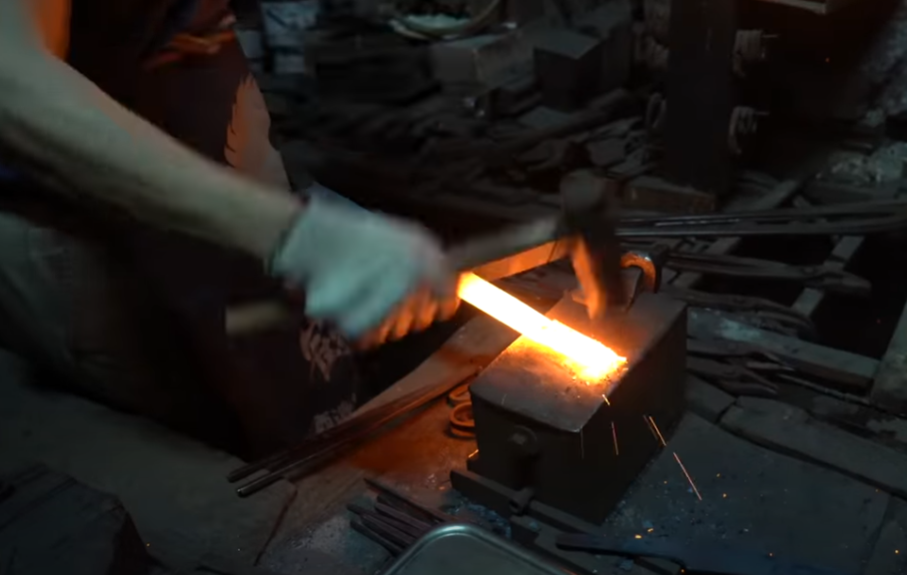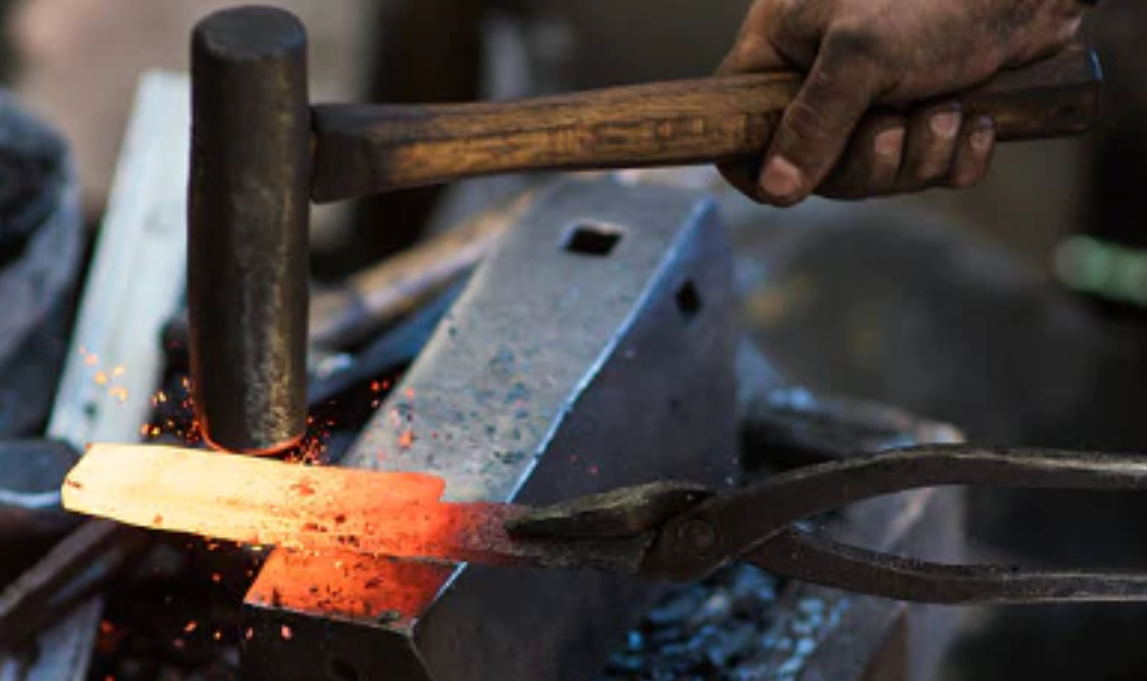
Preventing Rust in Japanese Knives
-
Simple Habits to Protect Your Knife
A Japanese knife is sharp, beautiful, and refined — but also delicate. Without proper care, even the finest blade can rust in a single night.
In this video, we’ll show you the simple daily habits and long-term tips to keep your knife rust-free, sharp, and ready to serve you for years. -
-
Japanese knives are admired worldwide for their sharpness and beauty. But behind that refinement lies a truth: they are also delicate. Without proper care, even the finest blade can rust quickly. Understanding why rust forms — and how to prevent it — is the key to keeping your knife a trusted companion for years.
-
Why Knives Rust
Rust is simply iron returning to its most natural state. When iron in steel meets oxygen and moisture, it forms iron oxide. On Earth, where humidity is always present, rust is inevitable unless we actively protect against it.
For knives, the risk is highest in kitchens — a place full of water, steam, salt, and acids. Carbon steel knives, prized for their unmatched sharpness, are especially vulnerable, though even stainless steel is not completely rust-proof.
-

-
Carbon Steel vs. Stainless Steel
- Carbon Steel: Incredibly sharp, but reacts quickly with moisture. Must be dried immediately after each use.
- Stainless Steel: More resistant thanks to chromium, which forms a protective invisible layer. But even stainless can rust if neglected.
Knowing this balance helps you choose the right knife for your lifestyle — and care for it properly.

Material of Knife
At KIREAJI, we use a range of steels, each offering distinct benefits. Harder steels hold their edge longer but require more skill to sharpen, while softer steels are easier to maintain. Knowing these differences helps you choose the blade that best fits your cooking style.
-
Daily Care: Three Simple Steps
- Wash Gently — Use lukewarm water, mild soap, and a soft sponge. Avoid dishwashers and harsh cleaners.
- Dry Immediately — Moisture is the enemy. Wipe thoroughly from tip to handle, especially around the joint.
- Store Safely — Keep in a dry, ventilated place, ideally in a wooden saya or block.
-
Long-Term Storage Tips
- Clean and Dry Completely before putting the knife away.
- Apply a Thin Layer of Camellia Oil to shield the blade from oxygen and moisture. Avoid vegetable oils, which go rancid and become sticky.
- Wrap in Newspaper — It absorbs moisture and helps preserve the oil film.
-

-
If Rust Appears
- Mild Rust: Remove gently with a rust eraser, abrasive cleaner, or even a cork with cleanser.
- Severe Rust: Use fine sandpaper or sharpen the blade with a whetstone, restoring both sharpness and cleanliness.
-
More Than Maintenance — A Philosophy of Care
Preventing rust is not just about protecting steel. In Japan, caring for a knife is seen as part of the craft of cooking itself. Each time you wash, dry, and store your knife, you’re not only preserving its edge — you’re also honoring the craftsmanship that created it and the meals it has helped prepare.
Rust may be the natural destiny of iron, but with mindful care, your knife can remain sharp, beautiful, and faithful for decades.
The Simple Rule for Preventing Rust
-

Rust begins the moment moisture meets carbon steel, which is why the most important protection is consistency. Gentle washing avoids damage, immediate drying removes the trigger of corrosion, and proper storage keeps humidity away. For longer rests, a light coat of oil creates a protective barrier the steel cannot form on its own. With these habits, the blade remains clean, stable, and ready for years of use.
-
FAQ About Preventing Rust in Japanese Knives

Q1. Does rust affect the sharpness of a knife?
Yes. Rust not only dulls the cutting edge but also weakens the blade over time. Even small patches of corrosion can compromise performance. Regular maintenance—washing, drying, and oiling—is essential to preserve both sharpness and longevity.
Q2. How can I reduce the risk of rust?
Carbon steel knives are highly sensitive to moisture and can begin rusting within minutes if left wet. To minimize the risk, always wash the knife immediately after use, rinse with hot water to accelerate drying, wipe it thoroughly with a clean cloth, and apply a thin layer of oil for protection. Stainless steel knives offer stronger rust resistance and are easier to maintain, but even they benefit from the same basic care.
Q3. What should I do if I notice black rust?
If black rust forms near the cutting edge, sharpen the blade with a whetstone to remove it. If it appears elsewhere, gently rub the area with a wine cork, mild cleanser, or a rust remover. Black rust does not compromise safety and is sometimes valued as a protective patina, giving the knife character over years of use.
Q4. My steel knife has discolored. Is that a problem?
Slight discoloration can occur after contact with fats, fish, or vegetables. This does not affect performance if the knife is properly cleaned, though it may appear unhygienic and can occasionally mask early signs of red rust. To restore appearance, rub the area with a wine cork or a potato base and a mild cleanser, then lightly sharpen if necessary.
Q5. What should I do if I see red rust?
Red rust requires immediate attention, as it spreads quickly and can cause deep corrosion. Start by rubbing it gently with a wine cork or vegetable base and cleanser. For stubborn spots, use a whetstone to sharpen the affected area. If sharpening is not possible, waterproof sandpaper can be used carefully to clean the surface.
Q6. Can I completely prevent rust on carbon steel knives?
Not entirely. Carbon steel is inherently reactive, and some degree of discoloration or patina is natural over time. The goal is not to avoid all change, but to prevent damaging red rust. With consistent washing, drying, and light oiling, a carbon steel knife will age gracefully and gain unique character without compromising performance.
A Note Before Your First Use: Protective Coating on New Japanese Knives
-

New Japanese knives purchased from KIREAJI are fully coated with a transparent liquid vinyl protective layer to prevent rust during storage and international shipping.
Especially on mirror-polished blades, this coating may appear as a faint rainbow-like film depending on the lighting. This is completely normal and does not indicate any issue with the steel or craftsmanship.
Before your first use, gently wash the blade with mild dish soap and lukewarm water, then dry it thoroughly. -
Why Are Japanese Stainless Steel Knives So Rust-Resistant?
-
Rust-Resistant. Sharp. Surprisingly Low Maintenance.
Japanese stainless steel knives defy expectations.
They combine the elegance of traditional craftsmanship with the science of modern metallurgy—delivering not just beauty and sharpness, but rust resistance that surprises even seasoned chefs.
What’s the secret behind this performance?
Let’s uncover the invisible shield that protects your blade: the passive film. -
The Soul of Craftsmanship
-
1. The Hidden Beauty of Rust
Rust often gets a bad reputation. To many, it’s a sign of neglect or decay.
But when it comes to Japanese knives, rust isn’t just deterioration—it’s proof that the knife has lived, been used, and stood by your side in countless meals.Like the lines on a seasoned craftsman’s hands, rust tells a quiet story of time, effort, and care. Rather than seeing it as mere damage, consider it a testament to the life your knife has shared with you.
-
2. Surface Rust vs. Deep Rust — And How to Handle Both
Not all rust is the same.
- Surface rust is usually harmless and can be gently polished away.
- Deep rust, however, can begin to eat into the blade, leaving pitting or cavities—much like a cavity in a tooth.
Even then, don’t despair. With careful polishing and sharpening, many knives can be brought back to life. You’re not just restoring steel—you’re continuing the journey of a trusted tool. -
3. Don’t Fear the Rust — Welcome the Ritual
What matters most is not the tools themselves, but the heart you bring to their care.
Whether using a rust eraser, cork, or even a daikon radish with cleanser, the ritual of polishing is an act of respect—a connection between you and your knife.A Japanese knife is not meant to stay pristine. It is meant to grow with you.
Each stain, scratch, or patch of rust becomes part of your shared story.So the next time you see rust, don’t judge it too harshly. Clean it gently, thank your knife, and carry on together.
After-Sales Service
-
A knife is more than a tool — it’s a lifelong partner in your kitchen.
At KIREAJI, we stand behind every blade we craft. That’s why we offer dedicated after-sales service to ensure your knife stays sharp, strong, and beautiful for years to come.
Whether it’s routine maintenance or expert repair, your knife returns to the same hands that forged it — the master artisans at Shiroyama Knife Workshop in Sakai, Japan.
Because true craftsmanship doesn’t end at the sale — it continues, as part of your culinary journey. -




